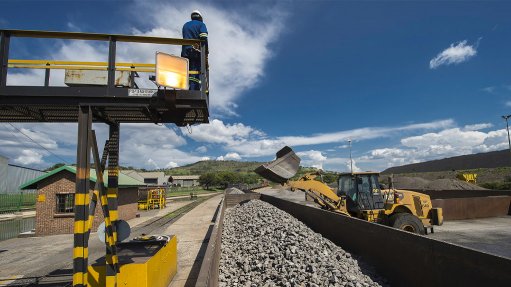
Glencore's chrome smelter in Lydenburg
In unpacking production and export figures for chrome and ferrochrome in 2023 and the first quarter of this year, the International Chromium Development Association (ICDA) has confirmed that China and South Africa continue to drive the chromium market.
ICDA senior market research analyst Tanya Atalay says these markets have shown resilience amid the global economic slowdown.
In China’s case, demand for chrome ore and high-carbon ferrochrome remains robust on the back of higher stainless steel output, which supports chrome ore prices.
In 2023, global chrome ore production experienced an increase, fuelled by heightened demand from Chinese smelters.
The production of chrome ore increased by 4% year-on-year in 2023, on the back of a 4.6% year-on-year growth in stainless steel production – which is a major demand source for chrome.
In the first quarter of the year, however, chrome ore production decreased compared with the fourth quarter of last year, owing to reduced consumption. The figures nonetheless demonstrate continued growth on a year-on-year basis.
Chrome prices are gaining momentum this year, but ferrochrome prices remain under pressure.
South African producers have resorted to using inventories of chrome amid higher-than-expected demand. The country remains the top exporter of chrome globally, while China remains the top importer.
South Africa accounts for about 17.8-million tonnes of the 21.8-million tonnes exported in 2023. In turn, China accounts for about 18.3-million tonnes of chrome imports out of a total 20-million tonnes that were imported globally in 2023.
In 2023, Africa accounted for 82% of the supply market share, while China held 92% of the import market share.
China has, in addition, started importing more chrome from Pakistan, Zimbabwe, Iran, Türkiye and Papua New Guinea.
All regions barring Asia recorded growth in chrome production in the first quarter of the year, with total output having grown by 4% year-on-year to 9.7-million tonnes in the quarter.
The 7% increase in South Africa’s chrome production in 2023 was, however, insufficient to cover the 27% growth experienced in exports globally – meaning there is a growing disparity between internal consumption, production and exports in South Africa.
Producers in Africa are preferring chrome ore production over ferrochrome production owing to high electricity costs and more favourable chrome ore market conditions.
While the high-carbon ferrochrome market is not significantly affected by the sanctions against Russia, the lower-carbon ferrochrome market structure is experiencing some changes.
Prices for ferrochrome remain under pressure as a result of weak global downstream markets and an oversupply of the alloy.
China continues to report growth in stainless steel production, while other main producing regions of stainless steel are experiencing lower growth.
The market expects 1.2-million tonnes of additional chrome supply this year owing to expansion projects by South African companies Jubilee Metals, Tharisa Minerals, Pelagic Resources, African Rainbow Minerals, Sibanye-Stillwater and Eastern Platinum.
South Africa may continue to struggle with the export of minerals owing to the country’s logistical constraints on rail and at ports. Producers have had to reroute shipments to the Maputo port, in Mozambique.
Ferrochrome have seen muted demand in the EU and the US given inflation and geopolitical issues affecting consumer demand, while the Chinese market is currently oversupplied, with its own production having reached record levels in 2023.
Global output of ferrochrome also increased by 4% year-on-year to 16.2-million tonnes in 2023.
UPCOMING CONFERENCE
Meanwhile, the ICDA will be hosting its Chromium 2024 conference, in Cape Town, from November 5 to 7.
The event will host speakers and delegates as they discuss how South Africa can reach its full chrome export potential over the next decade, particularly by addressing key systemic challenges.
More topics for discussion will include to what extent China is key to the development of South Africa’s chrome sector, what the outlook is for both the chrome and ferrochrome industries and how sustainability is affecting markets globally.